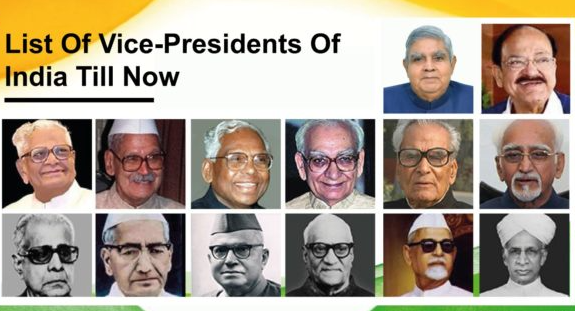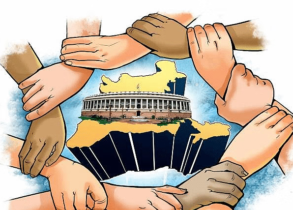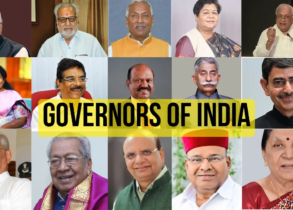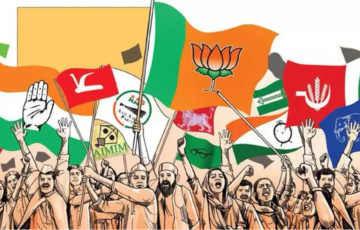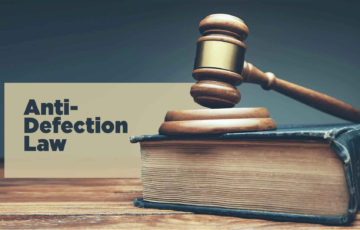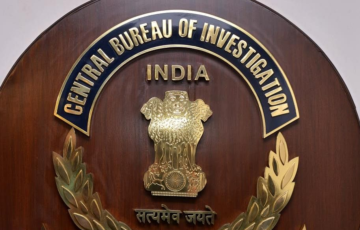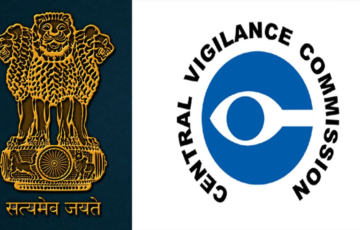VICE PRESIDENT
Introduction
- The Vice-President of India is the second-highest constitutional position in the country, holding an official rank just below the President. Inspired by the structure of the American Vice-Presidency, the Vice-President’s role is largely ceremonial and supportive, but pivotal in maintaining the functioning of the parliamentary system and ensuring a smooth legislative process in India. In the absence of the President, the Vice-President acts as the ex-officio Chairman of the Rajya Sabha, which plays a vital role in the law-making process. This position reflects the fundamental principles of democracy and the rule of law within the Indian political system. The Vice-President’s role is essential for upholding the principles of democracy and the rule of law in India.
Election
- Indirect Election: Similar to the President of India, the Vice-President is not directly elected by the people but is elected through an indirect election process.
- Electoral College: The Vice-President is elected by an electoral college, which consists of members from both Houses of Parliament. This electoral college is different from the one used for the election of the President in two significant ways:
- Composition: The electoral college for the Vice-President includes both elected and nominated members of Parliament, whereas the electoral college for the President only includes elected members.
- Exclusion of State Legislatures: Unlike the electoral college for the President, the electoral college for the Vice-President does not include members of the state legislative assemblies.
- Reason for Differences: The passage explains that these differences in the composition of the electoral colleges are based on the different roles and powers of the President and the Vice-President. The President is the head of the state with powers over both the central government and the states.
- As a result, the election of the President involves the participation of both members of Parliament and state legislatures. In contrast, the Vice-President’s primary role is to preside over the Council of States (Rajya Sabha) and to assume the duties of the President only on rare occasions. Therefore, it is considered unnecessary to include members of state legislatures in the election of the Vice-President.
- Election Process: Both the President and Vice-President are elected using the same method, which is proportional representation by means of the single transferable vote. Voting for the election of the Vice-President is conducted by secret ballot.
- Dispute Resolution: Any doubts or disputes related to the election of the Vice-President are handled by the Supreme Court of India, and its decision is considered final.
- Validity of Acts: If the Supreme Court declares the election of a person as Vice-President void, acts performed by that person before the Supreme Court’s declaration are not invalidated and continue to remain in force.
Qualifications, Oath and Conditions
| Qualifications | · He should be a citizen of India.
· He should have completed 35 years of age. · He should be qualified for election as a member of the Rajya Sabha. · He should not hold any office of profit under the Union government or any state government or any local authority or any other public authority. |
| Oath | Before entering upon his office, the VicePresident has to make and subscribe to an oath or affirmation. In his oath, the VicePresident swears:
· to bear true faith and allegiance to the Constitution of India; and · to faithfully discharge the duties of his office. The oath of office to the Vice-President is administered by the President or some person appointed in that behalf by him. |
| Conditions | The Constitution lays down the following two conditions of the Vice-President’s office:
· He should not be a member of either House of Parliament or a House of the state legislature. If any such person is elected Vice-President, he is deemed to have vacated his seat in that House on the date on which he enters upon his office as Vice-President. · He should not hold any other office of profit. |
Term of Office
- The Vice-President holds office for a term of five years from the date on which they assume office.
- The Vice-President can resign by addressing a resignation letter to the President.
- The Vice-President can be removed from office before completing their term by a resolution passed by a majority of all the then members of the Rajya Sabha and agreed to by the Lok Sabha. This resolution should be passed in the Rajya Sabha by an effective majority and in the Lok Sabha by a simple majority.
- The resolution for removal can only be introduced in the Rajya Sabha and not in the Lok Sabha.
- A minimum of 14 days’ advance notice is required before moving such a resolution.
- The Constitution does not specify grounds for the Vice-President’s removal.
- The Vice-President can continue in office beyond the five-year term until their successor takes charge.
- The Vice-President is eligible for re-election and may be elected for any number of terms.
Vacancy in Office
- A vacancy in the Vice-President’s office can occur due to the expiry of the five-year term, resignation, removal, death, or other disqualifications.
- When the term expires, an election to fill the vacancy must be held before the term’s expiration.
- If the vacancy arises due to resignation, removal, death, or other reasons, an election to fill the vacancy should be held as soon as possible after the vacancy occurs.
- The newly-elected Vice-President serves a full term of five years from the date they assume office.
Powers and Function of Vice President of India
- The Vice President of India plays an important role in the country’s political structure, with specific powers and functions, as outlined in the Constitution of India. Here are the key powers and functions of the Vice President of India:
- Presiding Officer of Rajya Sabha: The Vice President serves as the ex-officio Chairman of the Rajya Sabha, the upper house of India’s Parliament. In this capacity, the Vice President presides over the sessions of Rajya Sabha, maintains order, decides on points of order, and ensures that parliamentary rules and procedures are followed.
- Casting Vote: In case of a tie during voting in the Rajya Sabha, the Vice President has the casting vote. This means that the Vice President can exercise a vote to break the tie.
- Acting as President: If the President of India is unable to perform their duties due to illness, absence, or any other reason, the Vice President can act as the President until the President resumes their duties.
- Official Duties: The Vice President represents India at various official and ceremonial functions, both domestically and internationally, on behalf of the President.
- Constitutional Advisor: The Vice President can provide advice to the President if asked, particularly in matters related to the functioning of the Rajya Sabha.
- Presiding over Joint Sessions: When a deadlock occurs between the two houses of Parliament (Lok Sabha and Rajya Sabha) on certain bills or issues, the Vice President presides over joint sessions called to resolve these disputes.
- Leadership Role: The Vice President may play a leadership role in the Indian political landscape, particularly in the context of parliamentary politics and as a senior statesperson.
- Oath Administrator: The Vice President can administer the oath of office to the President, the Prime Minister, and other ministers as required.
- Discharging Other Functions: In addition to the constitutional roles, the Vice President may engage in various other functions, including attending and addressing academic and cultural events, representing India at international forums, and undertaking diplomatic visits.
Indian and American Vice-presidents Compared
| Aspect | Indian Vice President | American Vice President |
| Constitutional Role | Serves as the ex-officio Chairman of the Rajya Sabha. Presides over sessions, maintains order, and casts tie-breaking votes. Has limited executive powers and a largely ceremonial role. | Serves as the second-in-command to the President. Presides over the Senate with a potential tie-breaking vote. Often involved in advising the President on policy matters. |
| Selection Process | Elected by an Electoral College consisting of members of both houses of Parliament (Rajya Sabha and Lok Sabha). The election is conducted through a single transferable vote system. | Elected as the running mate of the Presidential candidate through the electoral process. The Presidential candidate who wins a majority of electoral votes selects their Vice Presidential candidate. |
| Term Length | Serves a fixed term of five years and is eligible for re-election. | Serves a four-year term, coinciding with the Presidential term. Can be re-elected to serve additional terms. |
| Powers and Influence | Has limited executive powers. Primarily oversees the functioning of the Rajya Sabha and carries out ceremonial duties. Does not have a direct role in the executive branch. | Is a key member of the executive branch. Can have a significant role in shaping policy, participating in the President’s decision-making process, and representing the administration in various capacities. |
| Succession to the Presidency | Is next in line to assume the presidency in case the sitting President is unable to carry out their duties due to death, illness, or other reasons. | Is next in line to assume the presidency in case the sitting President is unable to carry out their duties due to death, illness, or other reasons. |
| Ceremonial Duties | Carries out ceremonial duties, such as representing India at official functions and events. | Carries out ceremonial duties, representing the United States at official functions and events. |
Important articles related to Vice President of India
| Article | Description |
| Article 63 | Establishes the office of the Vice President of India. |
| Article 64 | Outlines the Vice President’s term of office, which is five years. |
| Article 65 | Provides for the election of the Vice President. It states that the Vice President shall be elected by an Electoral College consisting of members of both houses of Parliament (Rajya Sabha and Lok Sabha). |
| Article 66 | Deals with the manner of election of the Vice President and the procedure for such elections. |
| Article 67 | States that the Vice President may, in the absence of the President or when the President is unable to discharge their functions, act as President. |
| Article 69 | Pertains to the oath or affirmation that the Vice President must take before entering upon their office. |
| Article 70 | Addresses the Vice President’s discharge of functions during casual vacancies in the office. |
| Article 71 | Establishes the Vice President as the ex-officio Chairman of the Rajya Sabha, defining their role in presiding over the upper house of Parliament. |
| Article 72 | Gives the President the power to grant pardons, reprieves, respites, or remissions of punishment to any person. The Vice President can exercise this power if acting as President. |
UPSC PREVIOUS YEAR QUESTIONS
1. Consider the following statements: (2013)
1. The Chairman and the Deputy Chairman of the Rajya Sabha are not the members of that House.
2. While the nominated members of the two Houses of the Parliament have no voting right in the presidential election, they have the right to vote in the election of the Vice President.
2. Which of the statements given above is/are correct?
(a) 1 only
(b) 2 only
(c) Both 1 and 2
(d) Neither 1 nor 2
3. Discuss the role of the Vice-President of India as the Chairman of the Rajya Sabha.(2022)

